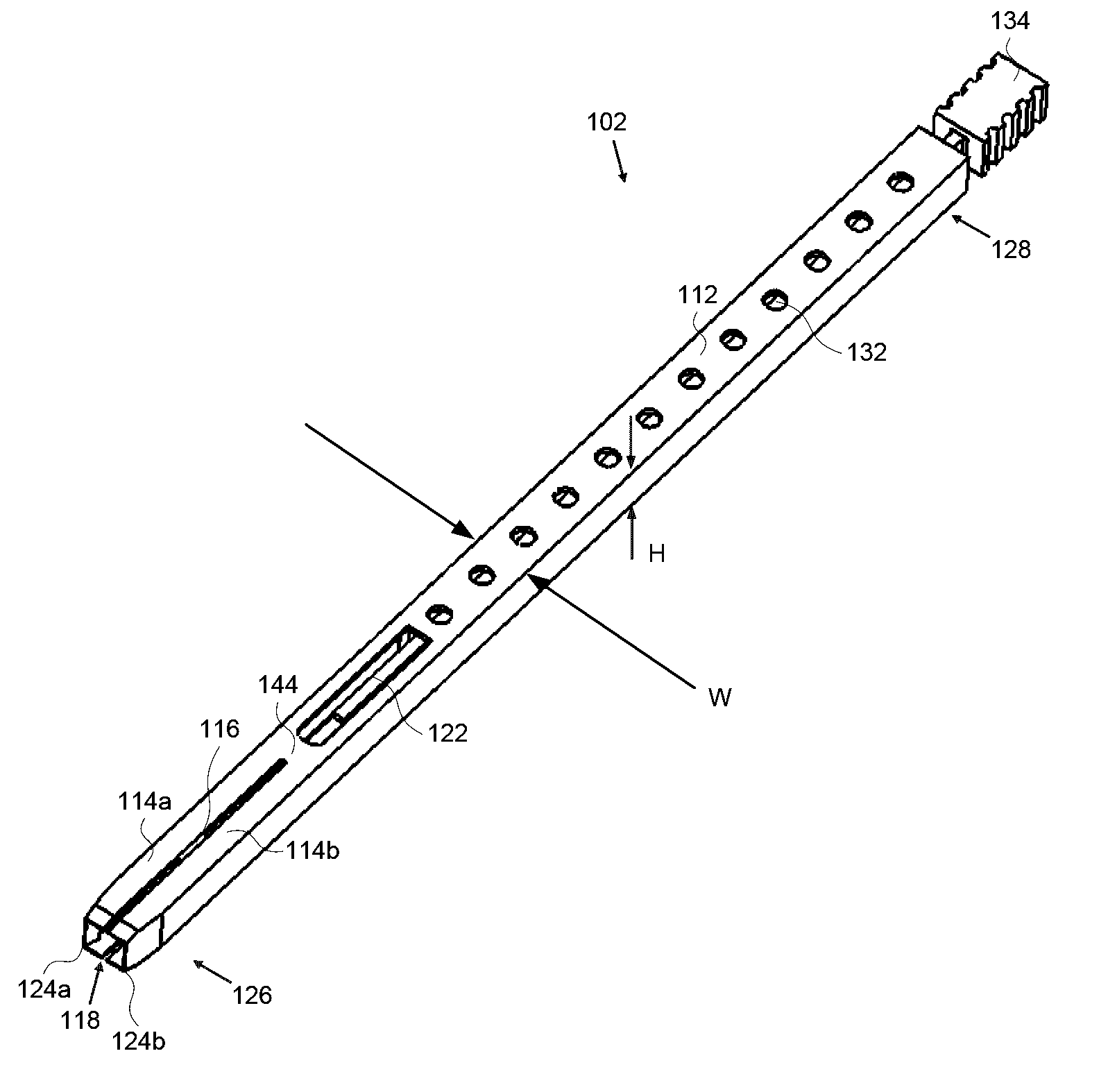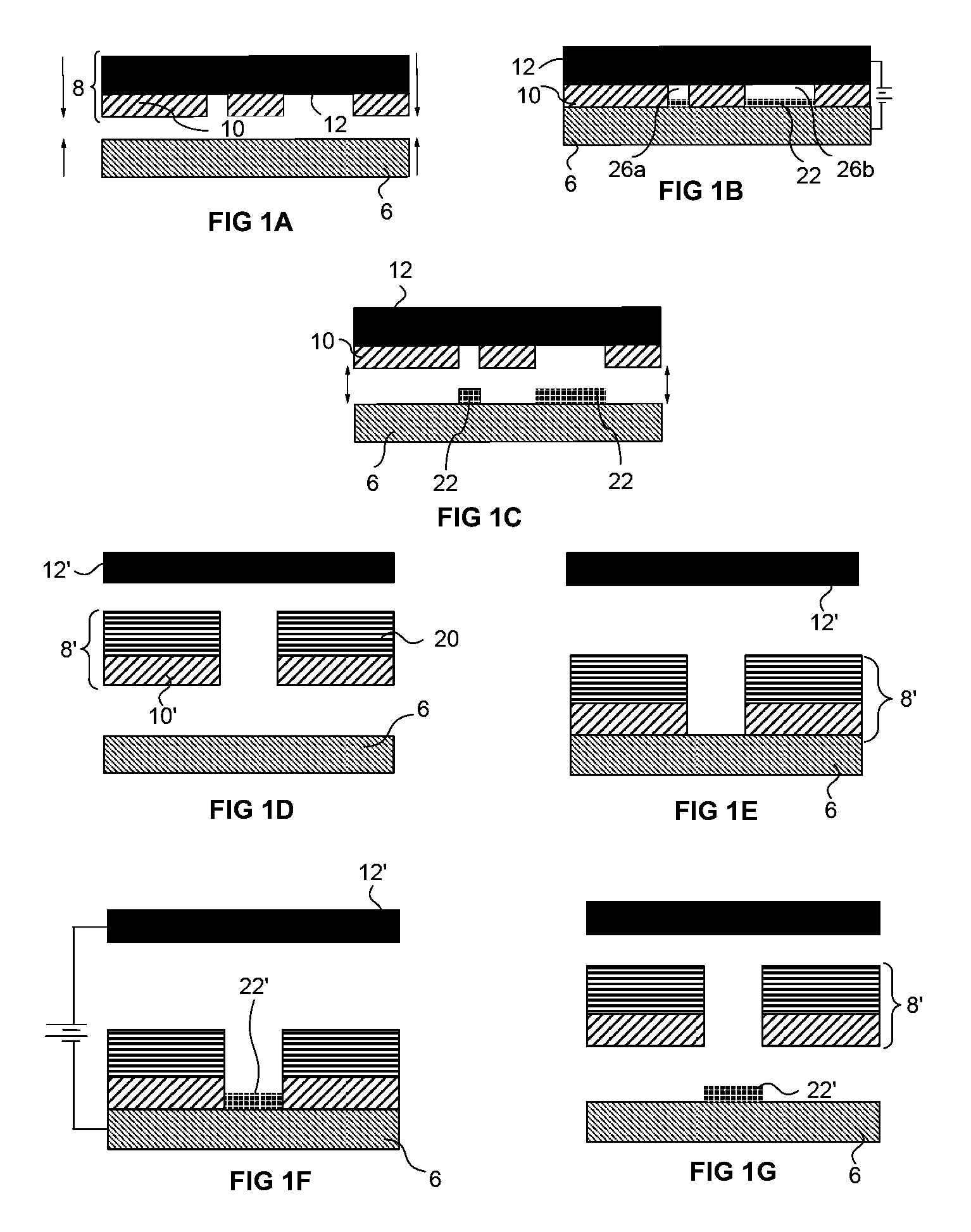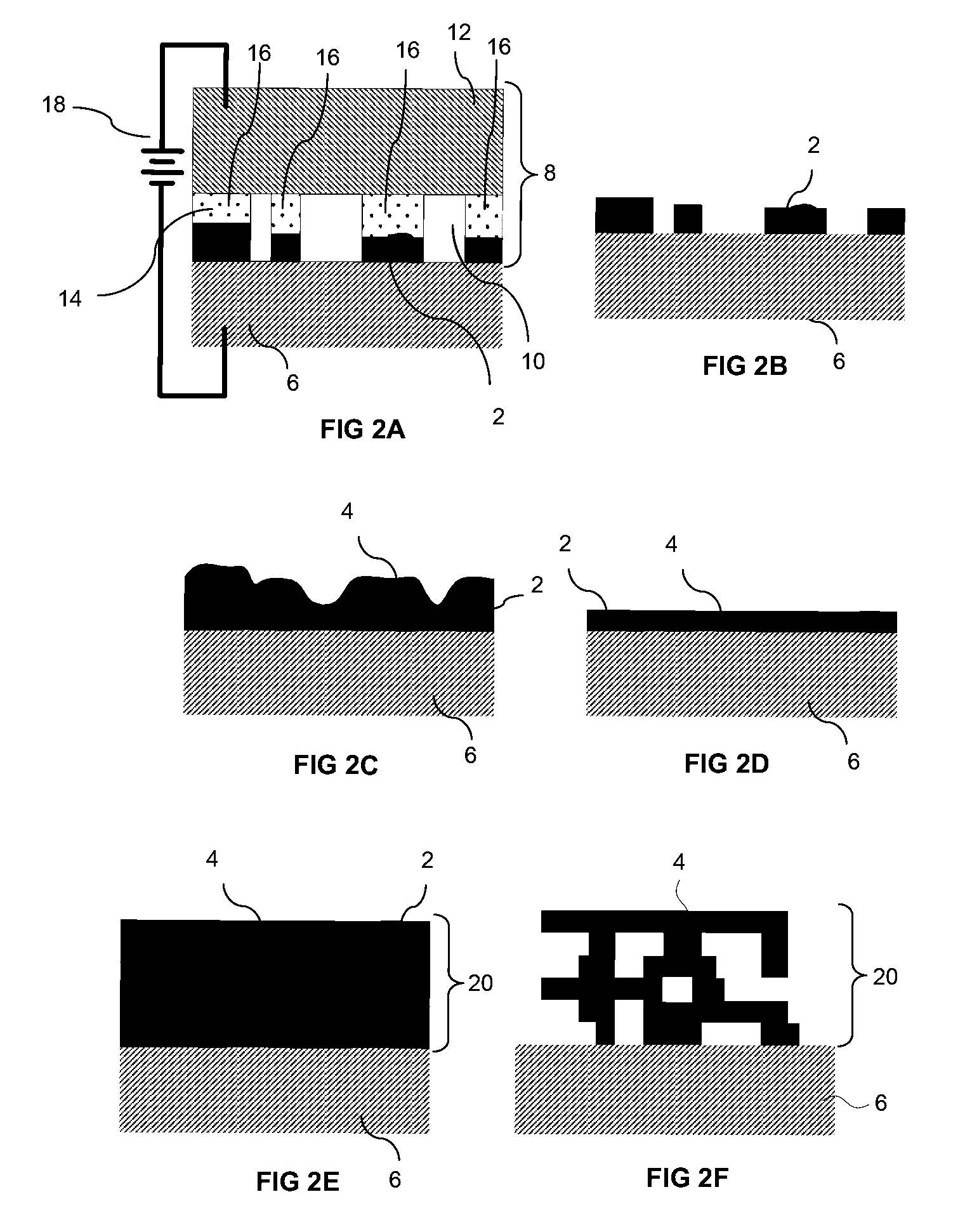Biopsy Devices, Methods for Using, and Methods for Making
- Summary
- Abstract
- Description
- Claims
- Application Information
AI Technical Summary
Benefits of technology
Problems solved by technology
Method used
Image
Examples
first preferred embodiment
[0112]FIG. 5 provides a perspective overview of the device of a first preferred embodiment. The device 102 includes a body portion 112 terminating at the distal end 126 in two jaws 114a and 114b that are initially substantially parallel, separated by a slot 116. The distal ends of the jaws 114a and 114b are preferably made sharp to serve as cutting edges 124a and 124b and are separated by an inlet 118. An aperture 122 is provided in the body 112 of the device to provide clearance for squeezing the device, as will be discussed below. In some alternative embodiments, such an aperture may not be necessary. The aperture 122 also serves, as do a plurality of release holes 132, to allow sacrificial material to be etched out (e.g. after fabrication of all layers of the device) when the device is fabricated using an electrochemical fabrication process that involves the use of a sacrificial material to fill portions of each layer that are not occupied by a structural material that defines pa...
third preferred embodiment
[0150]FIGS. 23A-23F provide a schematic representation of various stages of operation of a third embodiment of the invention. In the device of this embodiment, the tissue specimen is substantially cut free from surrounding tissue and then entrapped within a chamber in the form of a barrel by the rotation of the barrel. In FIG. 23A, the distal end 304 of the device 302 is shown with the barrel 306 in the open position where cuttings edges 312a and 314a are aligned and cutting edges 312b and 314b are aligned with the opening 316 in barrel 306 aligned with the opening 318 between cutting elements 312a and 312b. In FIG. 23B, the distal end of the device has been pushed into the tissue 310 of interest such that the cutting edges 312a, 312b, 314a and 314b penetrate into the tissue, forcing tissue to enter the interior 320 of the barrel 306. In FIG. 23C, the barrel has been rotated clockwise (as seen from the top) such that the barrel's cutting edge has severed a specimen 322 from tissue 3...
fourth preferred embodiment
[0159]FIG. 35 shows a partial view of a distal end of a device according to a fourth embodiment of the invention. This device 402 is similar in some ways to that of the device 302 of the third embodiment, in that the tissue specimen is substantially cut free from surrounding tissue and then entrapped within a chamber after passing through inlet 418 and the door closing. Here, however, in lieu of a rotating barrel there is a door 404 divided into articulated strips 406a-406q, the leading edge 408 of strip 406 of which forms a moving blade 408 that can cut a specimen loose that is located within the space behind the door as the door closes; the specimen then becomes trapped behind the closed door until it is later opened. The door resembles a ‘roll-up’ door of the kind used in industrial buildings, but on a much smaller scale. Each of the strips is able to flex relative to its neighbors by means of compliant or pivoting joints between them (not shown), thus allowing the door to bend a...
PUM
 Login to View More
Login to View More Abstract
Description
Claims
Application Information
 Login to View More
Login to View More - R&D
- Intellectual Property
- Life Sciences
- Materials
- Tech Scout
- Unparalleled Data Quality
- Higher Quality Content
- 60% Fewer Hallucinations
Browse by: Latest US Patents, China's latest patents, Technical Efficacy Thesaurus, Application Domain, Technology Topic, Popular Technical Reports.
© 2025 PatSnap. All rights reserved.Legal|Privacy policy|Modern Slavery Act Transparency Statement|Sitemap|About US| Contact US: help@patsnap.com



